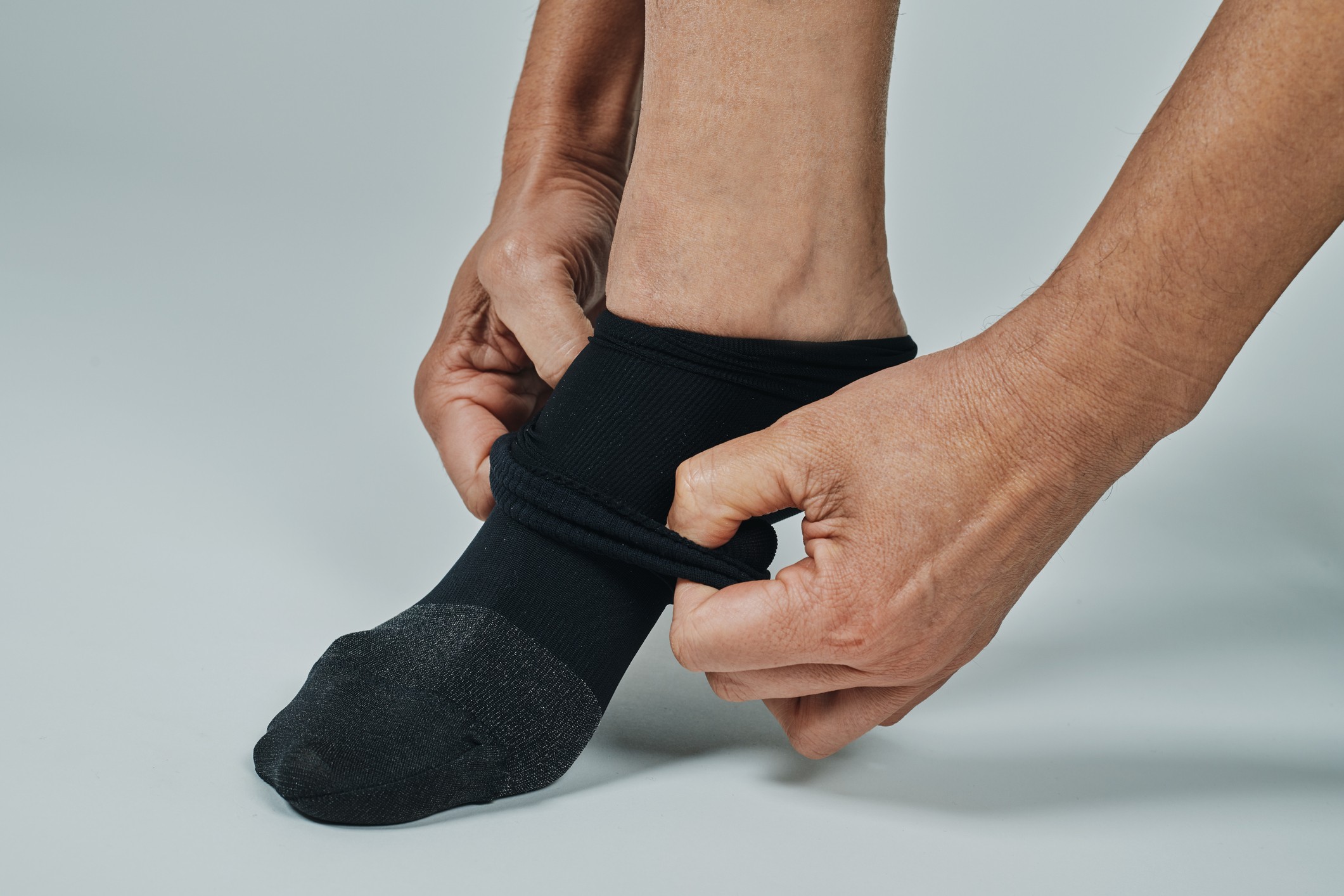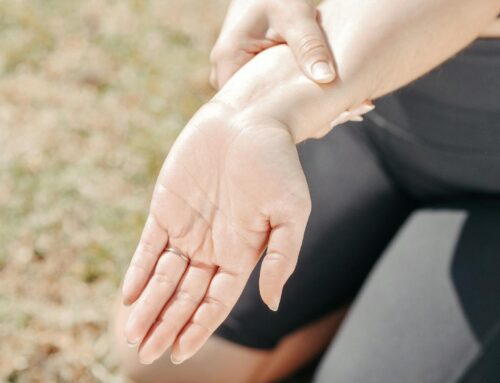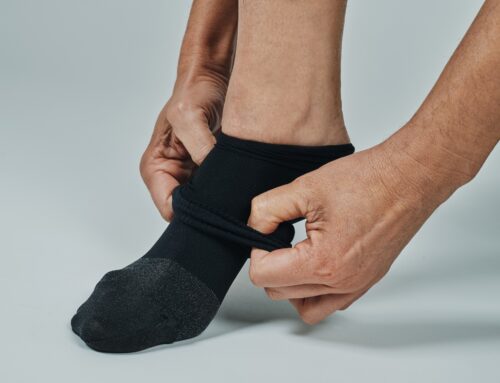Knee pain is a common issue that affects people of all ages, whether due to injury, arthritis, or wear and tear over time. Finding the right solution for managing knee discomfort is crucial for maintaining mobility and overall quality of life. Designed to support the joint, a knee brace can help alleviate pressure, reduce pain, and provide stability during movement, whether you’re recovering from an injury or managing a chronic condition.
How Does a Knee Brace Help Reduce Pain?
Knee braces work by providing essential support to the knee joint, which can reduce pain and improve mobility. They do this by stabilizing the knee, restricting certain movements that may cause strain, and distributing pressure evenly across the joint. This helps to alleviate discomfort, particularly in cases of injury, arthritis, or after surgery.
Knee braces can also promote healing by limiting unnecessary movement, thus allowing the affected tissues to recover more efficiently.
There are several types of knee braces, each with a specific function tailored to different needs:
Prophylactic Braces
These are designed to prevent injury during physical activities, particularly for athletes. They help protect the knee from excessive stress and are often worn as a preventative measure.
Functional Braces
Commonly used after an injury, functional braces provide support to knees with existing damage, such as torn ligaments or meniscus tears. They stabilize the joint, allowing users to move while reducing pain and preventing further damage.
Rehabilitative Braces
These braces are typically used after surgery or a serious injury. They limit movement while the knee is healing, ensuring that it is supported properly during the recovery process.
Unloader Braces
Primarily used by individuals with arthritis, unloader braces are designed to relieve pressure on one side of the knee joint. By shifting the weight off the damaged area, these braces help reduce pain and improve comfort during movement.
When Should You Consider Using a Knee Brace?
Knee braces can be beneficial in a variety of situations, particularly when you experience discomfort or instability in your knee joint. You may want to consider using a knee brace if you notice any of the following signs:
- If your knee frequently aches or swells after activity, a knee brace can help by providing stability and reducing the strain on the joint.
- Feeling like your knee is going to give way or buckle under pressure is a clear sign that extra support might be necessary. A knee brace can reinforce the joint, offering security during movement.
Stiffness or difficulty in bending, straightening, or rotating the knee can indicate that you need additional support, especially if these issues interfere with daily activities. - After a knee surgery, wearing a knee brace can protect the joint and help guide proper healing by limiting excessive movement.
Whether you’re dealing with a sports injury, arthritis, or recovering from surgery, a knee brace can provide the necessary support to reduce pain and improve your quality of life. Common conditions can lead to knee pain and may indicate the need for a knee brace:
Osteoarthritis
A degenerative joint disease like osteoarthritis can lead to significant pain and stiffness in the knee due to cartilage breakdown. Using a brace can help alleviate pain by redistributing pressure away from the damaged area
Ligament Injuries
Tears or strains to the ACL, MCL, or other ligaments can result in instability and pain. Knee braces are often used to support the joint as the ligament heals.
Bursitis
Inflammation of the bursae, known as bursitis, can result in knee pain, particularly when the joint is in motion. A knee brace may provide relief by offering additional support and reducing strain on the affected area.
Meniscus Tears
Damage to the meniscus, the cartilage that cushions the knee, can cause pain, swelling, and difficulty moving. A knee brace can provide stabilization during recovery.
Patellar Tendonitis
Inflammation of the tendon connecting the kneecap to the shinbone can cause pain, particularly during physical activities. A knee brace can help relieve this tension and promote healing.
Knee Braces That Offer Targeted Pain Relief
When it comes to managing knee pain, selecting the right brace can make a significant difference. Each of these braces offers unique features designed to address specific knee conditions, providing relief and helping to restore mobility.
GenuTrain® Knee Brace

The GenuTrain® also enhances proprioception, which is the body’s ability to sense its position, leading to better stability and coordination during movement. This brace is ideal for individuals experiencing mild to moderate pain from everyday activities or for those in post-injury recovery.
Conditions knee brace is best suited for:
- Mild to moderate knee pain
- Knee instability
- Post-injury recovery (minor ligament strains or sprains)
- General knee discomfort due to overuse or repetitive strain
- Swelling and inflammation around the knee
GenuTrain® P3 Knee Brace
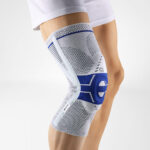
By guiding the patella and reducing its abnormal movements, the P3 brace significantly alleviates pain associated with improper tracking. It is an excellent choice for those with patellar instability, helping them maintain comfort and proper knee function during physical activity.
Conditions knee brace is best suited for:
- Patellofemoral pain syndrome (runner’s knee)
- Patellar tracking disorder (kneecap misalignment)
- Patellar subluxation or dislocation
- Chondromalacia patella (softening of the cartilage under the kneecap)
- Post-surgical recovery for patellar realignment
GenuTrain® S Knee Brace
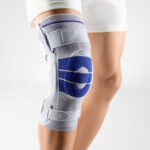
The GenuTrain® S is ideal for people who require extra support during physical activities, such as athletes recovering from minor ligament sprains, or for those looking for a reliable brace for daily use.
Conditions knee brace is best suited for:
- Ligament injuries (e.g., ACL, MCL tears or strains)
- Knee instability caused by ligament weakness
- Mild to moderate arthritis
- Meniscus injuries (tears or degeneration)
- Post-surgery stabilization and support
SofTec® Genu Knee Brace
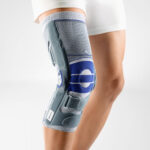
The SofTec® Genu is particularly effective during rehabilitation from surgeries or significant ligament injuries, providing both pain relief and the support needed for proper healing. Its robust design makes it a top choice for patients undergoing recovery who require maximum protection for their knee joint.
Conditions knee brace is best suited for:
- Severe ligament injuries (ACL, PCL, MCL)
- Meniscal tears
- Post-surgical recovery (e.g., ligament reconstruction, meniscus repair)
- Chronic knee instability
- Multi-ligament injuries requiring robust support
SofTec® OA Knee Brace
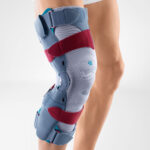
Built for long-term use, the SofTec® OA offers durable support and comfort, making it an excellent option for individuals managing chronic conditions like osteoarthritis. It provides consistent relief, allowing users to continue their daily activities with reduced pain and greater ease.
Conditions knee brace is best suited for:
- Osteoarthritis (unilateral or bilateral knee pain)
- Degenerative joint disease
- Medial or lateral compartment knee arthritis
- Conditions requiring load distribution away from the affected joint area
- Chronic pain management for long-term arthritis care
Benefits of Using a Knee Brace
Knee braces offer a range of benefits for those dealing with pain, injury, or chronic conditions.
Pain Reduction
One of the most significant benefits of a knee brace is its ability to reduce pain. By providing support and stabilization to the knee joint, a brace helps to alleviate pressure on injured or weakened areas. This support can reduce discomfort caused by conditions like arthritis, ligament tears, or general wear and tear. The brace also promotes better alignment and balance, which can relieve strain on the knee, helping to minimize pain during movement.
Increased Mobility
A knee brace can significantly improve mobility, even in the presence of pain or injury. By stabilizing the joint and supporting proper movement, the brace allows you to maintain an active lifestyle without the fear of further aggravating your knee. Whether you are recovering from surgery or managing a chronic condition, a knee brace can help you regain confidence in your movements, allowing you to participate in daily activities with greater ease and comfort.
Prevention of Further Injury
Knee braces also play a crucial role in preventing future injuries. For those with weakened ligaments, chronic knee instability, or a history of knee injuries, a brace can provide the necessary support to prevent further damage. By limiting excessive or harmful movements, knee braces protect the joint from strains, sprains, and overextension. This added protection is especially beneficial during physical activities, reducing the risk of re-injury while allowing you to continue moving safely.
Proper Fit and Care for Knee Braces
The effectiveness of a knee brace largely depends on its fit. A brace that is too tight can cause discomfort, restrict circulation, or limit movement, while one that is too loose may fail to provide the necessary support.
Custom braces are designed specifically for your knee’s measurements and unique needs, offering the best possible support and alignment. If a custom brace isn’t necessary, make sure to work with a professional to ensure the off-the-shelf option fits correctly and meets your specific requirements.
If you’re unsure about the fit of your knee brace or want to explore custom options, reach out to Care-Med. Our experienced professionals can help ensure your brace fits properly, giving you the support and comfort you need for pain relief and injury prevention.
Maintaining and Cleaning Your Knee Brace
To keep your knee brace in good working condition, regular maintenance and cleaning are important.
- Regular Cleaning
Depending on the material, most braces can be cleaned with mild soap and water. Be sure to rinse thoroughly and allow the brace to air dry completely before wearing it again. Avoid using harsh chemicals or bleach, as these can damage the material. - Check for Wear and Tear
Over time, the brace’s fabric and straps may stretch, and the support structures may weaken. Inspect your brace regularly for signs of wear and tear. If you notice any issues, consider replacing the brace to ensure continued support. - Proper Storage
When not in use, store your knee brace in a cool, dry place to prevent moisture buildup, which can lead to mold or odor. Avoid folding the brace in ways that could damage its structure.
Support Your Knees, Support Your Life
Whether you’re dealing with arthritis, recovering from surgery, or trying to prevent further injury, a properly fitted knee brace can provide the support and stability you need to reduce discomfort and maintain an active lifestyle. However, the effectiveness of a knee brace depends heavily on getting the right fit and choosing the right type for your condition.
For personalized care and expert fitting, it’s always best to consult a healthcare professional. At Care-Med, we specialize in helping you find the ideal knee brace for your needs, ensuring you receive the optimal support for pain relief and injury prevention. Reach out to us for a consultation and take the next step toward improving your knee health and overall well-being.
Share This Story, Choose Your Platform!
Table of Contents
We specialize in orthotics, body braces, and compression wear tailored to your unique needs in Toronto. Reach out to us at info@caremed.care or call 416-782-5353 to book your fitting and consultation.
Experience the difference of customized solutions designed just for you.




